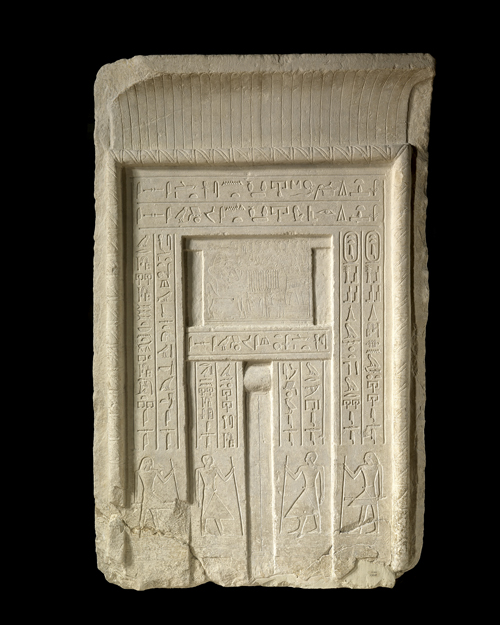
© 2004 Musée du Louvre / Georges Poncet
North Saqqara cemetery.
Middle Kingdom, 12th dynasty, c. 1963-1786 BC
Painted limestone
H.: 81.5 cm; W.: 49.5 cm
Department of Egyptian Antiquities, Musée du Louvre
(C 164)
Symbolizing the link between the chapel—with its system of offerings—and the burial chamber where the body lay, this three-tiered “false door” imitates a real entrance. The outer frame has uprights and architrave; the two inner uprights are topped by a lintel and a “sign”; the narrow, innermost double-door is crowned by a drum (a rolled mat). In the second half of the Old Kingdom, this unit was often edged with a torus and crowned with a high cornice, mimicking sacred architecture originally made with plant materials, which thereby turned the false door into a small-scale temple. The owner, Izi (or perhaps his ka) appears symmetrically on the uprights, heading “inside” the building. In the upper register he is seated, consuming for all eternity the offerings set in front of him, in the context of the royal offerings to the funerary gods Anubis and Osiris, as duly inscribed on two lines of the architrave. The main part of the texts, however, is unrelated to the offering, but instead identifies the deceased, as was common. The deceased’s name is repeated as often as possible; his titles, related to the administration of the treasury, are listed in long columns, whereas his position at court is summed up in horizontal lines.